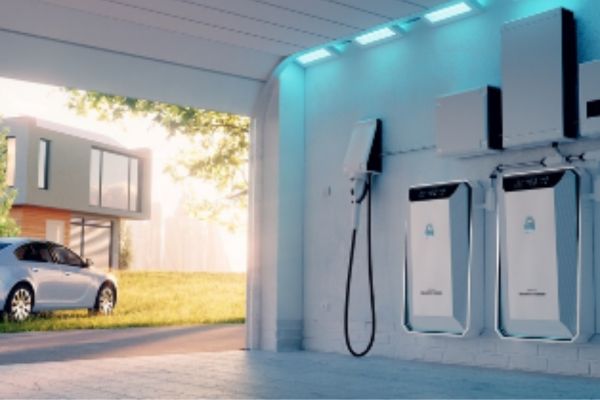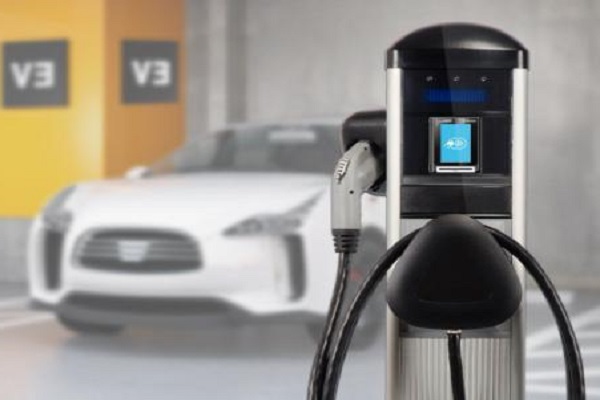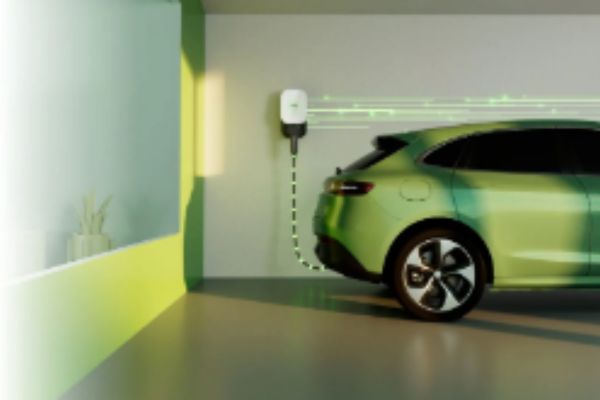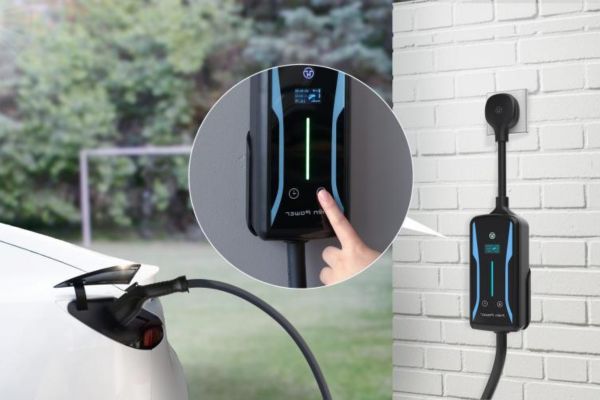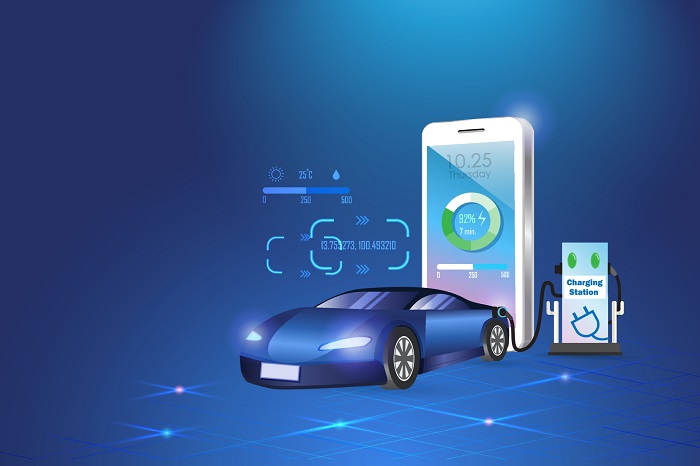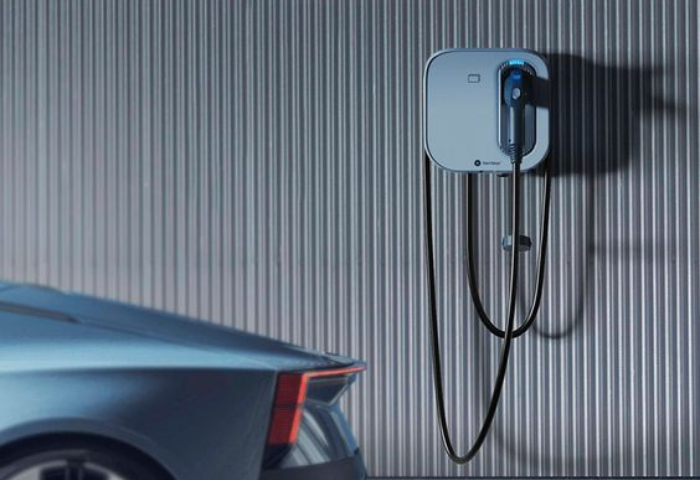What is a smart EV charger and why does it matter?
If you’ve been wondering, “What is a smart EV charger?” you’re not alone. A smart EV charger represents the next generation of electric vehicle charging technology, offering intelligent features that optimize charging times, manage power distribution, and extend battery life. Unlike standard chargers, smart EV chargers can communicate with your vehicle, home, and even the power grid to enhance efficiency and reduce costs. As the demand for electric vehicles grows, understanding the capabilities of smart EV chargers is essential for anyone looking to make an informed investment in sustainable transportation.
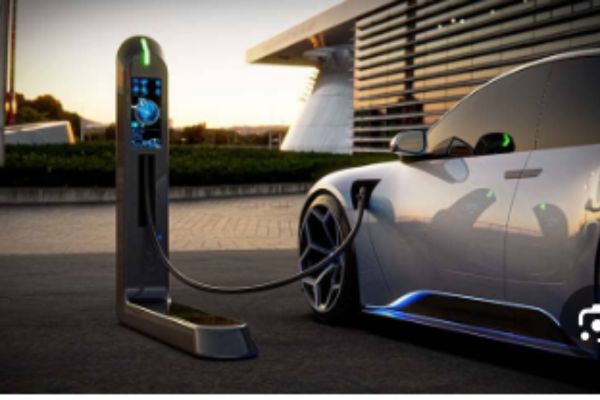
An overview of electric vehicle charging and the emergence of smart EV chargers is presented.
As concerns about environmental sustainability and the depletion of fossil fuels grow, electric vehicles (EVs) have surged in popularity, promising a greener alternative to traditional internal combustion engine vehicles.
The infrastructure required to support these vehicles, particularly in terms of charging, has evolved as a result of this shift. The development of EV charging technology not only supports the increasing adoption of electric vehicles but also enhances their integration into the energy grid.
The Evolution of Electric Vehicle Charging
We can trace the evolution of EV charging back to simple and slow charging systems that initially offered convenience at the cost of time. Early chargers often provided only level 1 charging, which is suitable for overnight use but slow enough to be impractical for drivers who need a quick charge. Level 2 chargers significantly reduced charging time and provided greater convenience with installations at home and public locations as technology advanced and demand for faster charging increased.
The advent of DC fast chargers marked a significant leap forward. These chargers can recharge an EV battery to 80% in as little as 20 minutes, addressing one of the major barriers to EV adoption—range anxiety. This development not only facilitated longer journeys but also mirrored the refueling experience of traditional cars, making the switch to electric vehicles more appealing for the general public.
Smart EV Chargers: An Introduction
As the network of EV chargers expanded, the need for more intelligent systems became apparent. Smart EV chargers represent a pivotal advancement in this landscape. These chargers not only provide power to electric vehicles but also boast sophisticated features that improve user convenience and grid efficiency. The internet connects smart chargers, enabling real-time data monitoring, remote control, and firmware updates.
Several factors contribute to the growing importance of smart EV chargers.
- Integration with Renewable Energy: By programming smart chargers to charge vehicles at the peak of renewable energy generation, like solar or wind power, we can promote the use of green energy.
- Grid Optimization: By managing the charging times and rates based on grid demand, smart chargers can help balance load and prevent overstrain on the electrical system during peak times. This feature is crucial as the number of EVs continues to grow.
- Cost Efficiency: Smart charging solutions can reduce the cost of charging for consumers by optimizing charging times to take advantage of off-peak electricity rates.
- User Convenience: Features such as scheduled charging, charging status notifications, and integration with home automation systems enhance user convenience, making the EV charging experience seamless and efficient.
Smart city and smart grid initiatives will increasingly integrate EV charging into their broader objectives in the future. As technology evolves, the capabilities of EV chargers will expand, likely incorporating more advanced features such as vehicle-to-grid (V2G) technology, where EVs can supply energy back to the grid, potentially transforming electric vehicles into mobile energy sources.
What is a smart EV charger and how do they work?
What is a smart EV charger?
A smart EV charger is an advanced type of electric vehicle (EV) charging station that incorporates internet connectivity and sophisticated software controls. In addition to providing electric power to vehicles, these chargers offer enhanced functionalities that enable interaction with the grid, the user, and other connected devices. Smart EV chargers are central to the modern approach to integrating electric vehicles into the broader framework of energy management and smart cities.
How do smart EV chargers work?
Smart EV chargers operate by connecting to a cloud-based system or network via Wi-Fi, Ethernet, or cellular communication. This connectivity enables them to receive and send data, allowing for real-time monitoring and control. Users can interact with these chargers through smartphone apps or web interfaces to schedule charging times, track energy usage, and receive notifications about their charging status.
An onboard processor powers the charger itself, executing the software that controls its operations. The charger can automatically update its software to maintain compatibility with new vehicle models and integrate new features or enhancements.
Key features of smart EV chargers
- Remote Control and Monitoring: Using a smartphone app, users can start, stop, and schedule charging sessions. This feature allows for greater flexibility and convenience, enabling users to take advantage of off-peak electricity tariffs by scheduling charging during cheaper rate periods.
- Integration with Renewable Energy Sources: Users can program smart chargers to align with periods of high renewable energy production. For instance, users can set their chargers to maximize solar energy consumption if they have solar panels installed at home, making EV charging more sustainable.
- Load Balancing: Smart EV chargers can adjust the charging rate based on the building’s overall consumption and the grid’s capacity. This load balancing helps maintain stable grid operations and prevents the risk of overloading local transformers and other electrical infrastructure, especially during peak hours.
- User Interaction and Engagement: Many smart chargers provide detailed reports and analytics on usage patterns, energy consumption, and cost, enabling users to optimize their charging habits and reduce expenses.
- Firmware Updates: As charging technology and standards evolve, smart chargers can receive firmware updates over-the-air, similar to updates on modern smartphones. This feature ensures that the chargers remain up-to-date with the latest functionalities and security patches.
- Vehicle-to-Grid (V2G) Capabilities: Some advanced smart chargers come equipped with V2G technology, which allows the energy stored in the EV’s battery to be fed back into the grid during times of high demand. This capability not only supports grid stability but can also potentially provide financial benefits to EV owners.
- Enhanced Security: Because cybersecurity is a critical concern, smart EV chargers often include robust security measures to protect user data and prevent unauthorized access. These might include encryption, secure authentication protocols, and regular security updates.
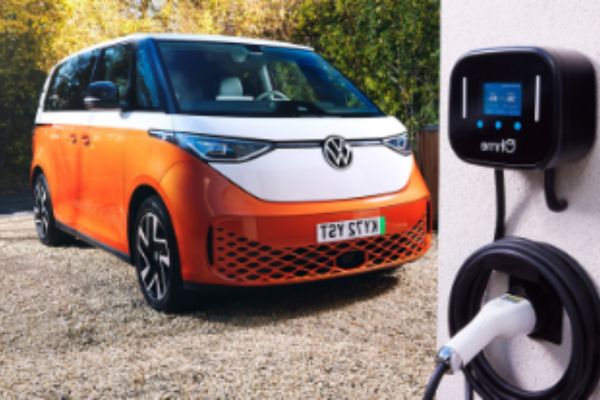
The article discusses the compatibility considerations between smart EV chargers and electric vehicles.
While the beauty of smart EV chargers lies in their advanced features, compatibility with your specific electric vehicle (EV) is still a crucial factor to consider. Here’s a breakdown of compatibility issues and how to choose the right charger for your EV model:
The plug factor
Standardization Efforts: Thankfully, major regions have adopted standardized charging plugs to avoid a compatibility nightmare. In North America, for instance, the CCS (Combined Charging System) is the dominant standard, while Europe leans towards CCS and Type 2 connectors.
Double-Check the Plug Type: Despite standardization, some EVs, particularly those from Tesla, utilize proprietary charging connectors. Always verify the plug type on your EV and ensure the smart charger you choose is compatible. Researchers are developing universal adapters to bridge the gap between different plug standards, but they may not be widely available yet.
Power Delivery Capacity
Not All EVs Charge at the Same Speed: Different EV models have varying battery capacities and charging speeds. While most smart chargers offer a range of charging speeds (Levels 2 and 3), ensure the charger’s maximum output meets the maximum acceptable input of your EV. Exceeding the limit can damage the battery.
Check your EV’s manual: Your EV’s manual will specify the recommended charging speeds and plug type. This information is crucial for selecting a compatible smart charger.
Here are some tips for selecting the right smart charger for your EV.
- Research Your EV’s Compatibility: Consult your owner’s manual or the manufacturer’s website to confirm the plug type and recommended charging speeds.
- Standardization Matters: Prioritize chargers that support the dominant standard in your region (CCS or Type 2) for future-proofing and wider compatibility.
- Consider Your Charging Needs: If you primarily charge at home overnight, a Level 2 charger might suffice. For frequent long-distance travel, a charger with DC fast-charging capability would be beneficial.
- Smart Features and Future Proofing: Look for chargers with features that suit your needs (remote monitoring, scheduling), and consider future upgrades to ensure compatibility with evolving technology.
Integration with Home Energy Systems
Smart chargers, when integrated with home energy management systems (HEMS), can significantly enhance both energy efficiency and cost savings. Here’s how this integration typically works and what benefits it provides:
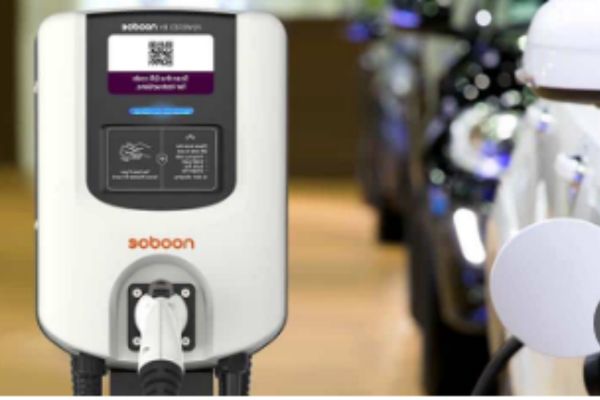
The integration of smart chargers with home energy management systems is underway.
- Communication and Control: Smart chargers integrate with a home’s energy management system through Wi-Fi, Bluetooth, or a direct wired connection. This enables the HEMS to monitor and control the charging of electric vehicles (EVs) based on a variety of factors, such as energy availability, demand, and cost.
- Dynamic Scheduling: The HEMS can dynamically schedule EV charging during off-peak hours, when electricity is cheaper and grid demand is lower. This not only saves on energy costs but also reduces strain on the grid during peak hours.
- Energy Source Optimization: In homes equipped with renewable energy sources, such as solar panels, the system can prioritize charging using the generated renewable energy before tapping into the grid. This maximizes the use of clean energy and minimizes energy costs.
- Load Balancing: Smart chargers can adjust the charging speed based on the overall home energy usage. For example, if a high-energy appliance, such as an air conditioner, is running, the system can reduce the charging speed of the EV to maintain balance and avoid high peak energy charges.
Benefits of Integration
- Increased Energy Efficiency: By optimizing the timing of EV charging and using renewable energy more effectively, these systems enhance overall energy efficiency. This results in less wasted energy and a smaller carbon footprint.
- Cost savings: During off-peak hours, dynamic scheduling significantly reduces energy costs. Moreover, maximizing the use of on-site-generated renewable energy means less reliance on expensive grid electricity.
- Enhanced Convenience: Users can set preferences once, and the system manages the rest automatically. For instance, the system not only guarantees the EV’s full charge by a specific time, but also optimizes its cost-effectiveness.
- Future-Proofing and Scalability: These systems can adapt and optimize based on real-time data and changes in grid dynamics as the energy grid evolves and integrates more renewable sources. This makes them highly scalable and future-proof.
- Improved Grid Stability: By managing when and how much electricity is drawn from the grid for EV charging, these systems help stabilize the grid and reduce the likelihood of outages during peak demand.
Why do I need a smart EV charger?
A smart EV charger is a vital investment for electric vehicle owners for several reasons, ranging from personal convenience and financial benefits to broader environmental impacts. Let’s explore these aspects in detail:
Detailed Benefits of Smart EV Chargers
- Convenience: Smart EV chargers offer an unparalleled level of convenience compared to standard chargers. Smartphone apps easily manage them, enabling users to control charging times, monitor energy usage, and receive notifications about their charging status. This means you can start, stop, or schedule charging sessions to suit your daily routine without needing to physically interact with the charger.
- Reduced Energy Costs: One of the primary benefits of smart EV chargers is their ability to optimize charging schedules based on electricity rates, which often vary throughout the day. By programming your charger to operate primarily during off-peak hours when electricity is cheaper, you can significantly reduce the cost associated with charging your EV. Some smart chargers also have the ability to respond to real-time changes in utility rates, adjusting charging patterns to capitalize on sudden price drops.
- Load Balancing: Smart chargers can dynamically adjust the charging power based on the overall home energy consumption. This means that during times of high domestic energy usage, the charger can reduce its load to avoid tripping the circuit breaker or incurring high peak energy tariffs.
- Integration with Home Energy Systems: As part of a home energy management system, smart chargers can work in sync with your home’s energy resources, such as solar panels or battery storage, optimizing the use of renewable energy for charging and further reducing reliance on the grid.
Environmental Impact
Smart chargers play a significant role in enhancing the environmental benefits of driving an EV.
- Supporting Renewable Energy Usage: By enabling more efficient use of self-generated renewable energy, smart chargers make it easier to charge your EV with clean energy. For instance, if you have solar panels, the charger can prioritize charging your vehicle during the day when solar production is at its peak rather than pulling energy from the grid.
- Reducing Carbon Footprint: By optimizing the timing of EV charging to coincide with low-demand periods on the grid, smart chargers help increase the proportion of renewable energies in the grid mix. This is because during off-peak times, utilities often have a surplus of renewable energy. Using cleaner electricity can significantly reduce the overall carbon footprint of charging an EV.
- Encouraging Off-Peak Charging: This not only benefits the user financially but also aids in grid management. By flattening the demand curve, smart chargers help prevent extreme peaks in electricity demand, reducing the need for utilities to activate additional, often less environmentally-friendly power plants.
- Facilitating Smart Grid Interactions: Smart chargers can communicate with the grid to receive signals about the current supply situation, including the availability of renewable energy. This feature allows them to adjust charging based on when the grid is greenest, thus promoting a more sustainable energy ecosystem.

Incentives and rebates
Government and utility incentives for electric vehicles (EVs) and related infrastructure, such as EV chargers, play a crucial role in promoting the adoption of greener transportation options. These incentives can significantly reduce the cost of purchasing and installing EVs and their charging equipment, making them more accessible to a broader audience. Here’s an overview of the types of incentives available and how to qualify for them.
Types of Incentives
In many countries, the federal government offers tax credits for purchasing new electric vehicles and, in some cases, for installing EV charging stations. In the United States, for example, buyers of new EVs can receive a federal tax credit of up to $7,500, depending on the battery capacity and the manufacturer’s sales volume. Additionally, there may be tax credits available for the installation of EV charging stations at home.
State and Local Incentives: In addition to federal credits, many states, provinces, or local governments offer additional incentives. These may include:
- Rebates and tax credits: direct reductions in the purchase price, or tax credits for buying an EV or installing a charging station.
- Reduced vehicle taxes and fees: lower registration fees, exemptions from sales taxes, or reduced property tax rates for EV owners.
- Grants and subsidies: direct funding to support the purchase of electric vehicles or charging infrastructure.
Electric utilities may offer incentives to EV owners to reduce the installation cost of home charging equipment or provide reduced rates for electricity used to charge EVs, particularly during off-peak hours. These incentives help manage the load on the electrical grid and encourage EV use.
Non-Monetary Incentives: While some incentives are not directly financial, they still add significant value.
- HOV Lane Access: Allows EVs to use high-occupancy vehicle lanes, regardless of the number of passengers.
- Preferred Parking: Dedicated EV parking spots, often with charging stations.
- Exemptions from Emissions Testing: Many regions require periodic vehicle emissions testing, but EVs are typically exempt.
How to qualify for incentives
Research and Compliance: To qualify for these incentives, thorough research and understanding of each program’s specific requirements are required. Here are some general steps to follow:
- Check Eligibility Requirements: Each incentive program has its own criteria, such as the type of vehicle, the income level of the applicant, or the geographic area. For example, certain rebates only apply to fully electric vehicles, not hybrids, and some tax credits phase out once a manufacturer sells a certain number of vehicles.
- Purchproperrough eligible channels: Authorized dealerships or retailers must sell vehicles or chargers in order to be eligible for certain incentives.
- Keep Proper Documentation: In many cases, applying for incentives requires proof of purchase, residence, and compliance with specific conditions. Keep all relevant receipts, forms, and correspondence.
- Apply Within Deadlines: Some incentives either have application deadlines or are available on a first-come, first-served basis.
- Follow the installation guidelines: In order to qualify for incentives for charging stations, installation may need to adhere to regional building codes.
- Consult professionals: Due to the complexity of some incentive programs, you can fully realize all potential benefits by consulting with a tax professional or a financial advisor.

Installation Considerations
Can I install an EV charger at home myself?
Installing an electric vehicle (EV) charger at home is a project that can vary significantly in complexity, depending on the type of charger and your existing electrical infrastructure. Here’s a breakdown of DIY versus professional installation options, along with safety considerations.
DIY Installation
While DIY EV charger installation is possible, we typically recommend it only for those with a strong background in electrical work. Here are some considerations if you’re thinking about installing an EV charger yourself:
- Electrical Knowledge: You need to understand your home’s electrical system, including how to safely work with high voltage, and ensure that the installation meets local electrical codes and standards.
- Permits: To install an EV charging station, many local governments require a permit for the installation of an EV charging station. Obtaining a permit may require an inspection to verify the installation’s correctness and safety.
- Tools and Equipment: Installing an EV charger involves specific tools and equipment, such as circuit testers and possibly heavy-duty wiring or conduit. Ensure you have access to these tools and know how to use them safely.
Professional Installation
For several reasons, most homeowners highly recommend professional installation.
- Safety: Due to their training in handling high-voltage electrical equipment, professionals can guarantee a safe and hazard-free installation.
- Compliance: Certified electricians will be familiar with local codes and regulations, ensuring that the installation complies with all legal requirements, which can also affect your insurance.
- Warranty and Support: Some EV charger warranties require installation by a certified professional to remain valid. Additionally, professional installers often provide support and maintenance services.
Safety Considerations
Electrical Safety: Working with electricity, particularly the high voltages associated with EV chargers, poses significant risks, including electrical shock or fires.
Correct Specifications: To avoid overloading circuits, the charger must match the specifications of your home’s electrical system.
Long-Term Reliability: Incorrect installation can lead to issues over time, including inefficient charging and potential damage to both the charger and the vehicle’s battery.
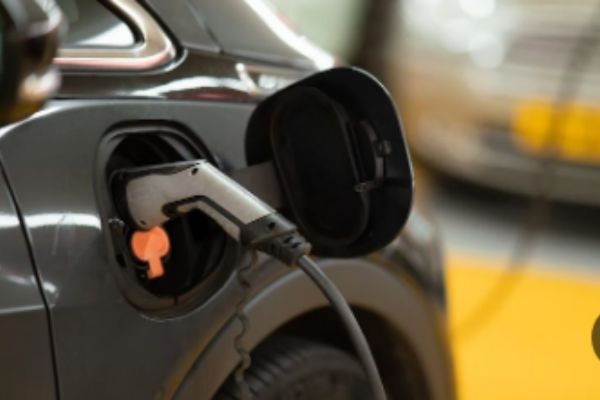
Do EV home chargers need Wi-Fi?
Wi-Fi is not strictly necessary for an EV charger to function; however, connectivity plays a crucial role in maximizing the functionality of smart chargers. Here’s how Wi-Fi connectivity enhances an EV charger’s capabilities:
Role of Connectivity in Smart Chargers
- Remote Management: Wi-Fi enables the charger to be operated remotely via a smartphone app. Users can start, stop, and schedule charging sessions from anywhere.
- Energy Management: Smart chargers can integrate with home energy management systems to optimize electricity usage. This integration often requires a Wi-Fi connection to manage and synchronize data effectively.
- Firmware Updates: Smart chargers can receive firmware updates via Wi-Fi, which can improve functionality and security.
- Usage Tracking and Reporting: Connectivity enables detailed tracking of energy use and cost, which can be important for budgeting and monitoring the environmental impact of EV usage.
The article focuses on the security features and risks associated with smart EV chargers.
While smart EV chargers offer convenience, they introduce potential cybersecurity vulnerabilities. Here’s a breakdown of the risks and how manufacturers address them:
- Data breaches: Hackers could steal data transmitted between the charger and user apps, such as charging history or financial information.
- Unauthorized access: Malicious actors might remotely manipulate charging settings or disrupt charging altogether.
- Energy theft: In public charging scenarios, someone could potentially steal electricity from the charger.
Security Measures:
- Encryption: Reputable manufacturers encrypt communications between chargers and apps, scrambling data to make it unreadable without a decryption key.
- Authentication and Authorization: User logins with strong passwords and multi-factor authentication make it harder for unauthorized access.
- Secure communication protocols: Manufacturers use established protocols designed to ensure secure data exchange.
- Firmware signing and updates: Chargers may have mechanisms to verify the authenticity of firmware updates, ensuring they come from a trusted source and fix security vulnerabilities.
- Some chargers are designed to detect unauthorized physical tampering and shut down.
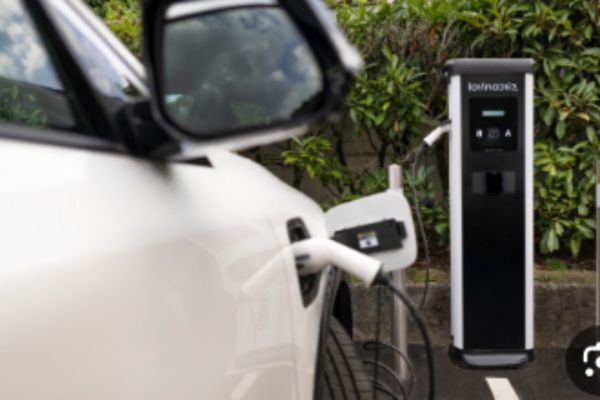
Reviews and feedback from users on smart EV chargers
User experiences with smart EV chargers vary depending on the brand, model, and individual needs. Here’s a general summary of user feedback:
Positive
- Convenience: Users appreciate remote monitoring, scheduling, and ease of use with smartphone apps.
- Cost savings can be achieved by optimizing charging based on electricity rates.
- Insights: Users value the data and insights provided by the charger, helping them understand their charging habits.
Negative
- Connectivity issues: Some users report problems with Wi-Fi connectivity or app functionality.
- Limited features: Not all chargers offer the same feature set, and some users might find the available features lacking.
- Security concerns: A few users express concerns about data security and potential hacking risks.
Finding the right charger
Reading user reviews and considering the security features mentioned above can help you choose a smart EV charger that meets your needs and offers a good balance between convenience and security.
How much does a smart charger cost?
The cost of smart EV chargers can vary based on features, capabilities, and brands. Here’s an analysis of the typical costs, potential savings over time, and a look at pricing for some popular models:
Cost Analysis of Smart EV Chargers
- Purchase Price: The upfront cost of a smart EV charger typically ranges from $500 to $800. High-end models with advanced features like enhanced connectivity, faster charging speeds, or integrated energy management systems can cost upwards of $1,000.
- Installation Costs: Depending on your home’s existing electrical infrastructure, installation costs can vary widely. If you need upgrades to your electrical panel or extensive wiring, simple installations might cost as little as $200, but the costs can exceed $1,000.
- Operating Costs: The operating cost of a smart charger largely depends on your local electricity rates and how much you use it. You can significantly reduce these costs by taking advantage of off-peak charging features.
Potential Savings Over Time
Smart chargers have the potential to generate significant savings over time, primarily through:
- Reduced Electricity Costs: By charging during off-peak hours when rates are lower, you can significantly decrease the cost per charge. Depending on your utility’s rate structure, this could mean savings of 20–40% on your charging costs compared to standard rates.
- Optimized Use of Renewable Energy: If you have home solar panels or are part of a renewable energy program, smart chargers can maximize the use of this energy, which can further reduce your reliance on grid electricity and lower your energy bills.
- Longevity of Battery Life: Smart charging can help in maintaining the health of your EV’s battery by preventing overcharging and supporting battery-friendly charging speeds, potentially extending the life of the battery and saving money on costly replacements.
Pricing of Popular Models
- ChargePoint Home Flex: Around $700–$749. You can adjust it to match any home electrical supply and it offers up to 50 amps of power. It’s Wi-Fi enabled and works with an intuitive app that allows for scheduling and monitoring of charging sessions.
- Enel X JuiceBox: Typically priced between $649 and $699. It offers powerful charging speeds and comes with a smart app that includes features like power monitoring, charge scheduling, and notifications.
- Tesla Wall Connector: It costs about $550. This charger caters to Tesla vehicles and provides a maximum power output of 48 amps. The Tesla app allows for its control and seamless integration with the vehicle’s charging systems.
Enjoy Convenient and Efficient Smart Charging from Anywhere!
Smart chargers elevate the convenience of EV ownership by enabling remote control and monitoring of the charging process via smartphone apps. This means that you can start or stop charging from anywhere, schedule charging sessions to take advantage of lower electricity rates, and even get notifications about your charging status. The integration with home energy systems enables automatic optimization of your charging based on household energy consumption and the availability of renewable energy, thereby enhancing the efficiency of the entire process.
Overall, while the upfront costs of smart EV chargers may be higher than those of basic units, the long-term savings, convenience, and environmental benefits they offer can provide substantial value to EV owners.
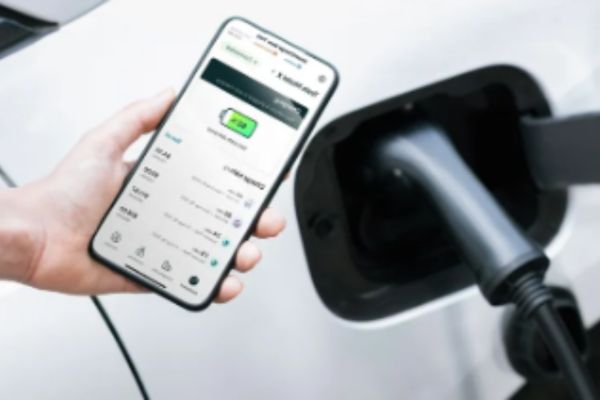
Home The Advantages of Home Charging vs. Public Charging Stations
While both options have their place, home charging offers several advantages over public charging stations:
- Convenience: Simply plug in at home and wake up to a fully charged car every morning. morning. There is no need to seek out stations or wait in line.
- Cost-effectiveness: Electricity rates at home are usually lower than public charging station fees. Over time, you can potentially save significantly on charging costs, especially if you take advantage of off-peak electricity rates.
- Security: Your car is charging safely in your own driveway, reducing the risk of vandalism or theft compared to public stations.
- You have complete control over the charging process. Schedule charging for off-peak hours, and monitor charging status from the comfort of your home.
- Weather protection: When charging at home, the elements shield your car.
The featured smart EV chargers lack specific recommendations.
Here’s a breakdown of some popular features to consider when choosing a smart EV charger, along with some examples (without recommending specific brands):
Important Features:
- Power Output (kW): Higher kW deliver faster charging, but they require compatible wiring. Consider your car’s charging capabilities and needs. For example, the typical range of Level 2 chargers is between 7 kW and 11.5 kW.
- Wi-Fi connectivity: Enables smart features like remote monitoring, scheduling, and potentially firmware updates.
- J1772 compatible: This is the standard 511.5 kW format for most EVs in North America.
- Safety features: Look for features like overload protection, ground fault protection, and tamper detection.
- Mobile app functionality: Think about the app’s ease of use, available features, and user reviews.
- Warranty: An extended warranty provides peace of mind.
Examples provided are solely for informational purposes and do not include specific recommendations.
- ChargePoint Home Flex
- Grizzli EV charging station
- Emporia Level 2 EV Charger
- Autel MaxiCharger
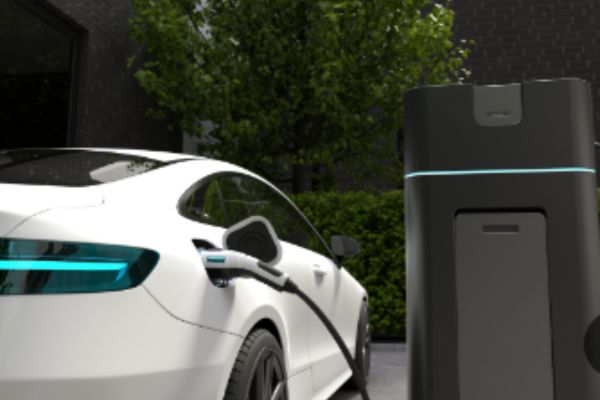
We offer support and resources for smart EV chargers.
Here are some guidelines on how to access support and additional resources related to smart EV chargers, divided into subsections for ease of navigation:
Products
For information on specific smart EV chargers, including features, specifications, and pricing, you can visit the official websites of manufacturers or authorized retailers. Additionally, online marketplaces and review platforms often provide detailed product listings and user reviews to help you make informed purchasing decisions.
Resources
- Manufacturer Websites: Many manufacturers provide comprehensive resources on their websites, including user manuals, installation guides, FAQs, and video tutorials.
- Joining online forums and communities dedicated to electric vehicles or smart home technology can provide valuable insights and support from fellow EV owners and enthusiasts.
- Industry Publications: Stay informed about the latest developments in smart EV charging technology by reading industry publications, blogs, and news websites focused on electric vehicles and sustainable transportation.
Support
- Customer Support: Most manufacturers provide customer support services, including phone, email, and live chat support, to assist with product inquiries, troubleshooting, and warranty issues.
- Authorized Installers: For expert advice and support, speak with authorized installers that the manufacturer or retailer has recommended if you experience installation issues or need professional assistance.
- Some manufacturers provide online support portals where you can access technical documentation, software updates, and self-service resources to resolve common issues independently.
Applications
- Mobile Apps: Download the official mobile apps provided by smart EV charger manufacturers to access remote monitoring, control, and management features directly from your smartphone or tablet.
- Mobile apps associated with charging networks or service providers can be used to locate nearby public charging stations, check availability, and initiate charging sessions on the go.
- Explore third-party energy management apps that integrate with smart EV chargers to optimize charging schedules, monitor energy consumption, and maximize efficiency based on your preferences and utility rates.
We are troubleshooting common issues with smart EV chargers.
Here are some common issues faced by users of smart EV chargers, as well as troubleshooting tips to resolve them:
| Issue | Troubleshooting Tips |
| The charger won’t connect to Wi-Fi. | Ensure Wi-Fi is operational and within range of the charger. Reset Wi-Fi settings on the charger and re-enter credentials. Refer to the user manual for specific troubleshooting steps. |
| Charging Interruptions | Check for a stable power source and eliminate voltage fluctuations. Inspect charger cables and connectors for damage or loose connections. |
| Charging speeds are slow. | Verify the charger is supplying the correct voltage and current for your vehicle (consult user manuals). Clean the connectors and ensure proper contact between the charger and the vehicle’s charging port. |
| Error Messages | Consult the user manual or manufacturer’s documentation to decode the error message.Follow the recommended troubleshooting steps provided by the manufacturer. |
The document outlines the regulatory and compliance requirements for smart EV chargers.
When installing and using smart EV chargers, it’s essential to comply with relevant regulations and standards to ensure safety and legality. Here are some important considerations:
Electrical codes and permissions
Compliance: Follow local electrical codes and regulations when installing the charger. Obtain any necessary permits from local authorities before beginning installation to ensure compliance with building and safety codes.
Certification and Standards
Certification: Choose smart EV chargers that comply with industry standards and certifications, such as UL (Underwriters Laboratories) or CE (Conformité Européenne), to ensure product safety and quality.
Compatibility: Ensure that the charger is compatible with your vehicle’s specifications and charging requirements to prevent compatibility issues and potential damage to the vehicle’s battery.
Data privacy and security
- Protection: Safeguard personal and sensitive data collected by smart EV chargers by implementing robust cybersecurity measures, such as encryption and secure authentication protocols.
- Compliance: Adhere to data privacy regulations, such as the General Data Protection Regulation (GDPR) in the European Union or the California Consumer Privacy Act (CCPA) in the United States, to protect user privacy rights.
Accessibility and ADA Compliance
Install charging stations in locations that adhere to the Americans with Disabilities Act’s (ADA) or equivalent rules in other jurisdictions’ accessibility regulations, including provisions for people with disabilities.
Environmental Impact
To minimize carbon emissions and promote sustainability, consider the environmental impact of EV charging infrastructure by opting for energy-efficient chargers and utilizing renewable energy sources whenever possible.
Conclusion
Selecting the right smart EV charger is crucial for maximizing the efficiency, convenience, and safety of electric vehicle charging. Smart charging technology offers numerous benefits, including remote monitoring and control, energy optimization, and integration with home energy management systems.
By choosing a smart EV charger that meets your needs and complies with regulatory requirements, you can enjoy a seamless charging experience while contributing to sustainability efforts. Invest in the future of transportation by embracing smart charging technology and making informed decisions about your electric vehicle charging infrastructure.
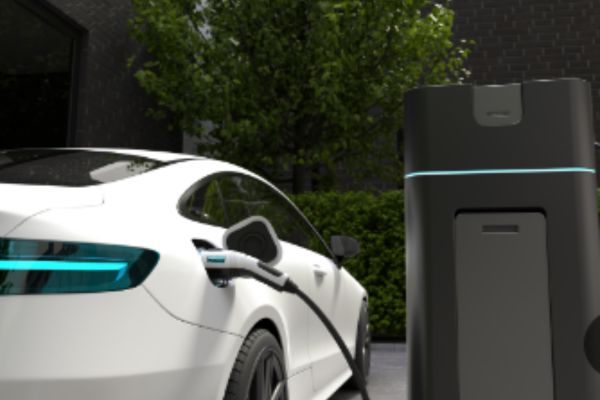
FAQs
1. What is the difference between a smart EV charger and a standard charger?
Smart EV chargers offer advanced features such as remote monitoring, scheduling, and integration with home energy management systems, allowing for more efficient and convenient charging compared to standard chargers.
2. How do I know if my electric vehicle is compatible with a smart charger?
Most electric vehicles are compatible with smart chargers that use standard charging connectors, such as the J1772 connector. However, it’s essential to verify compatibility with your vehicle’s specifications and charging requirements.
3. Do I need Wi-Fi for a smart EV charger to function?
While Wi-Fi connectivity enhances the functionality of smart EV chargers by enabling remote monitoring and control, it is not strictly necessary for basic charging operations. Some chargers offer alternative connectivity options, such as cellular or Ethernet.
4. Are there any incentives or rebates available for purchasing a smart EV charger?
Many governments and utility companies offer incentives and rebates for purchasing and installing smart EV chargers as part of efforts to promote electric vehicle adoption and sustainability. Check with local authorities and utility providers to see what programs are available.
5. How can I ensure the safety of my smart EV charger installation?
To ensure the safety of your smart EV charger installation, follow local electrical codes and regulations, obtain necessary permits, choose certified chargers, and hire professional installers if needed. Regularly inspect and maintain your charger to prevent potential hazards.
6. Can I charge my electric vehicle at home using renewable energy sources?
Yes, you can charge your electric vehicle at home using renewable energy sources such as solar or wind power. You can program smart EV chargers to prioritize charging during high renewable energy generation periods, thereby reducing reliance on non-renewable sources.
7. How can I optimize my smart EV charger for cost savings and energy efficiency?
To optimize your smart EV charger for cost savings and energy efficiency, take advantage of off-peak electricity rates, schedule charging sessions during periods of low demand, and integrate the charger with home energy management systems to maximize renewable energy utilization. Regularly monitor and adjust charging settings based on your preferences and utility rates.
Glossary of Terms
When providing a glossary of terms, it’s important to define each technical term or acronym clearly and succinctly to ensure that all readers, regardless of their prior knowledge, can fully understand the content of the article. Here are some example definitions that you might find in an article about smart chargers:
- A smart charger is a device that uses intelligent technology to manage the process of charging electronic devices, optimizing charging speed and battery health.
- IoT (Internet of Things): A network of physical objects—devices, vehicles, appliances—that uses sensors and APIs to connect and exchange data over the Internet.
- A battery management system (BMS) is an electronic system that manages a rechargeable battery by protecting the battery from operating outside of its safe operating area, monitoring its state, calculating secondary data, reporting that data, and controlling its environment.
- Li-ion (Lithium-ion) Battery: A type of rechargeable battery commonly used in home electronics and electric vehicles, known for its high energy density and low maintenance requirements.
- Voltage Regulation: The process of maintaining a constant voltage level to ensure the safe and efficient operation of electronic devices.
Call to Action
As you consider the advancements in charging technology, upgrading to a smart charger can significantly enhance your charging efficiency and extend the lifespan of your devices’ batteries. In addition to offering faster charging times, smart chargers also incorporate features such as overcharge protection and energy usage monitoring, guaranteeing the safe and effective charging of your devices.
To learn more about the latest in smart charging technology, visit our product pages for detailed information and reviews. Explore our resources to gain a better understanding of how smart chargers can make a difference in your daily life. Don’t miss out on the benefits—consider making the switch today!
By encouraging readers to explore further and providing direct links to additional resources, you can effectively guide them towards making informed decisions about upgrading their charging solutions.

Henry Michael is a leading expert in EV charging station research, specializing in innovative solutions for electric vehicle infrastructure. With a passion for sustainability and technological advancement, he is dedicated to advancing the accessibility and efficiency of EV charging worldwide.

